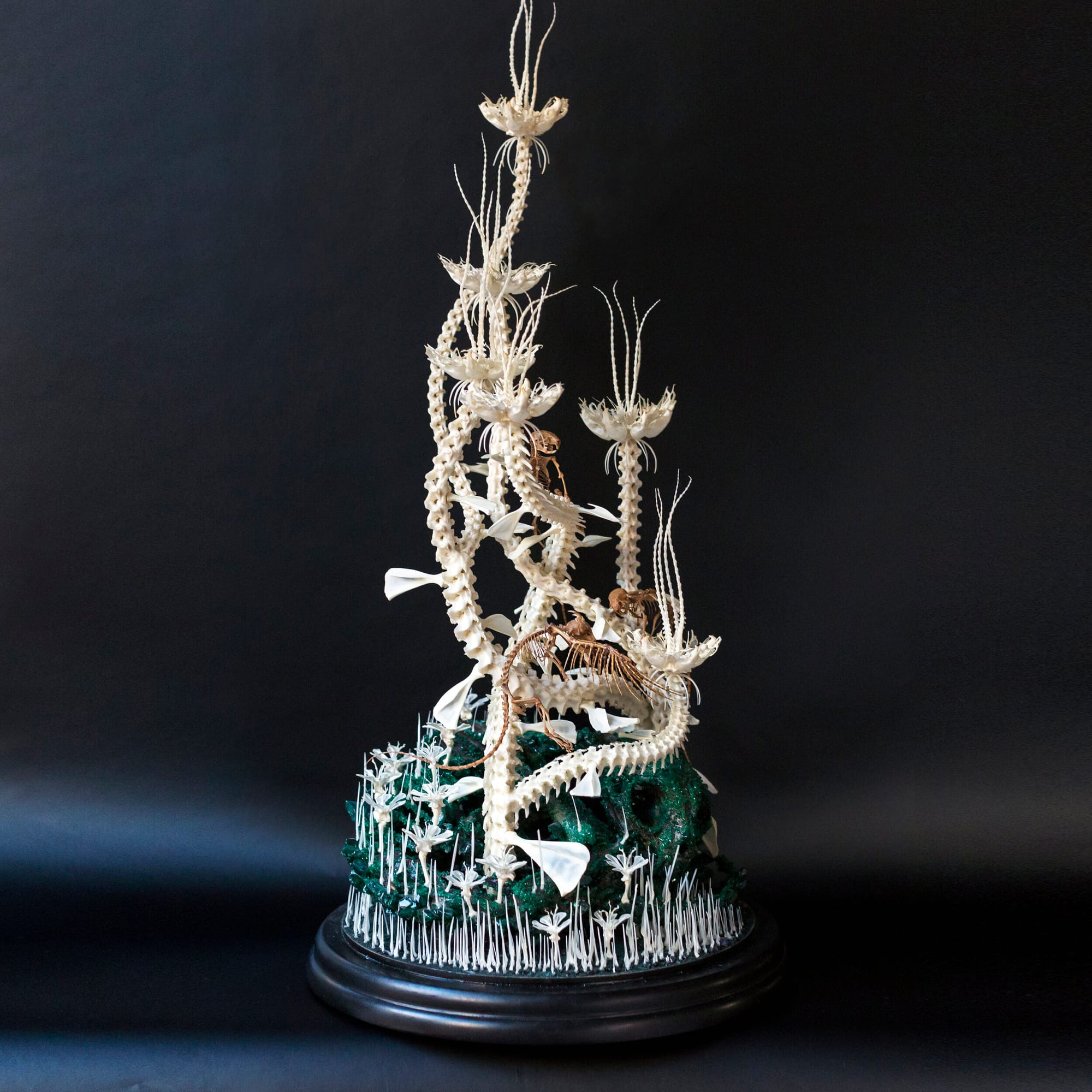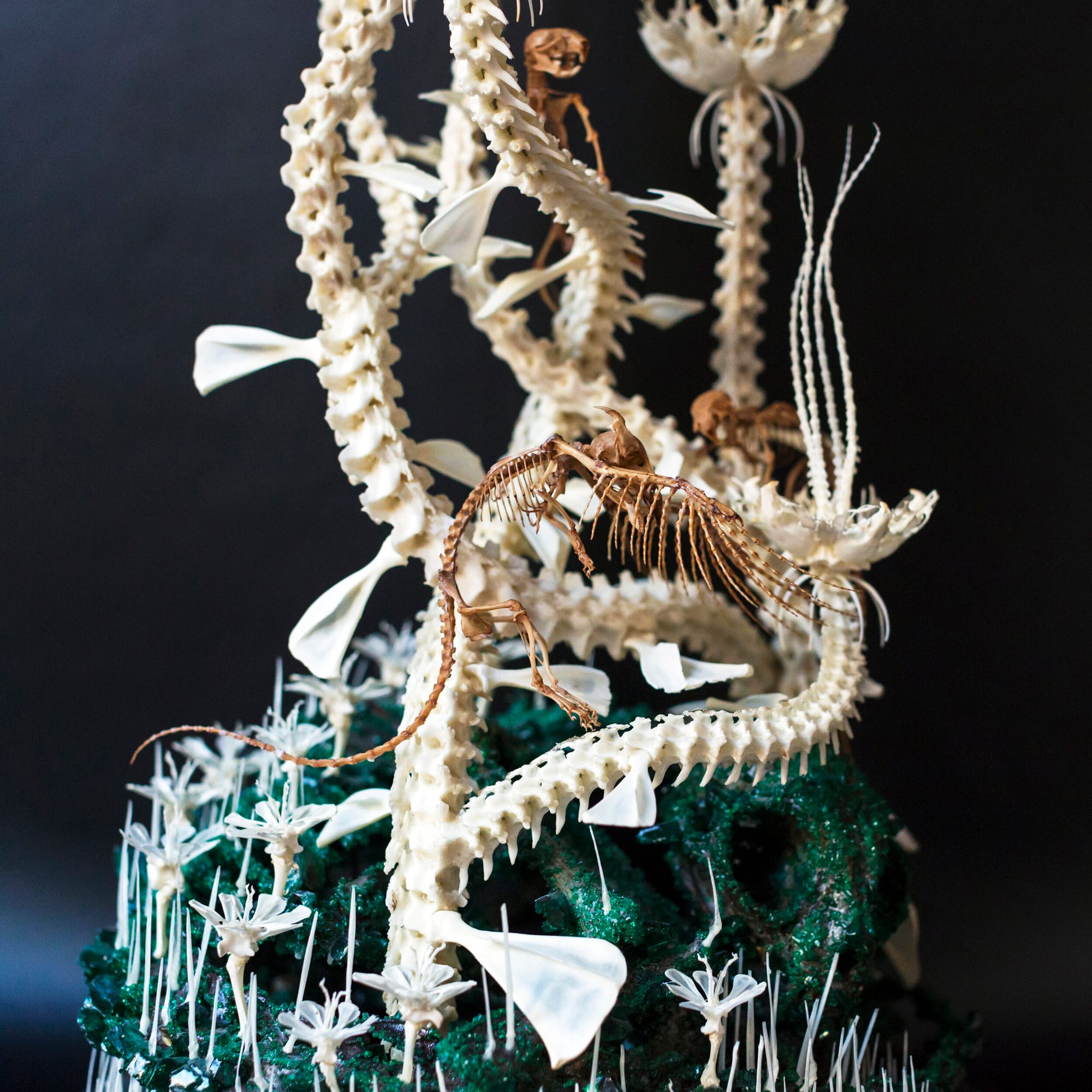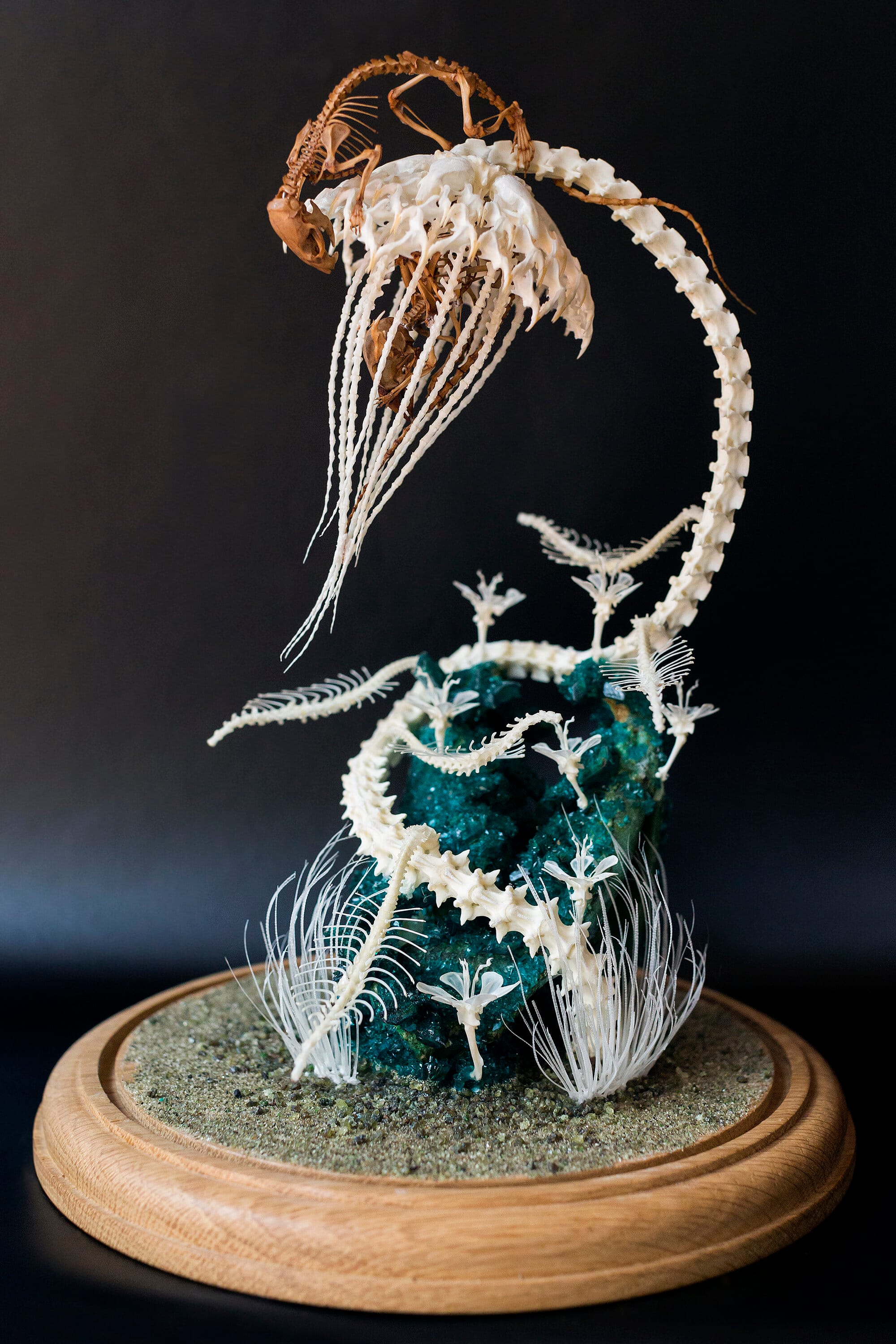Australian artist Gerard Geer works primarily with ethically sourced animal bones, turning them into remarkable articulated skeleton sculptures. These sculptures made of bones are held together by wires, hardware, string and other supports to mimic the way that they functioned together in a living being. Yet, in his 2020 series, Metamorphosis, Geer has arranged different animal bones to create new life-forms, mythical plants and animals that sprout from the remains of today’s existing animals.

These pieces showcase nature’s resilience, visualizing its ability to grow from decay and continue to evolve and thrive in harsh living conditions. At a time when the planet seems to be headed more into total environmental collapse, these pieces expose an uplifting yet macabre narrative. It is one where nature continues to thrive despite losing its familiar forms and being able to coexist with human beings. Hence, the animal skeletons become a sort of memento mori which says that nature will resume with or without human life, making Metamorphosis a call to action to stand against climate change. This is why the pieces are relevant to the United Nations Sustainable Development Goals of Life on Land and Climate Action.

Some of Geer’s pieces in Metamorphosis look as though they can be arranged into a narrative. From Chrysalis to Weaver, the story of two rodents can be told. When one of them is caught by a carnivorous plant, the other sits and waits patiently, as if refusing to acknowledge that its friend is gone forever. However, when all hope seems lost, the previously assumed dead rodent emerges from the plant, transformed into a creature with a beak and wings, as if the plant had spliced its genes with those of a bird. Though this may seem like a work of fiction, evolution is a very real phenomenon that has given fish the ability to walk on land and given prehistoric hippos the ability to live underwater today.

Gerard Geer’s Metamorphosis series uses animal bones to craft fantastical hybrid creatures, celebrating nature’s ability to adapt and endure through decay. These macabre and inspiring sculptures serve as a stark reminder of nature’s resilience even in the face of environmental collapse. By blending elements of life and death, Geer’s work calls for urgent climate action, emphasizing that while nature will evolve and persist, the forms familiar to and harmonious with humanity may not survive. Therefore, Metamorphosis urges viewers to protect the environment before it transforms into something unrecognizable or hostile.
Find out more about Metamorphosis and other pieces by Gerard Geer on his website www.gerard-geer.com or Instagram @articulated_imagination.
